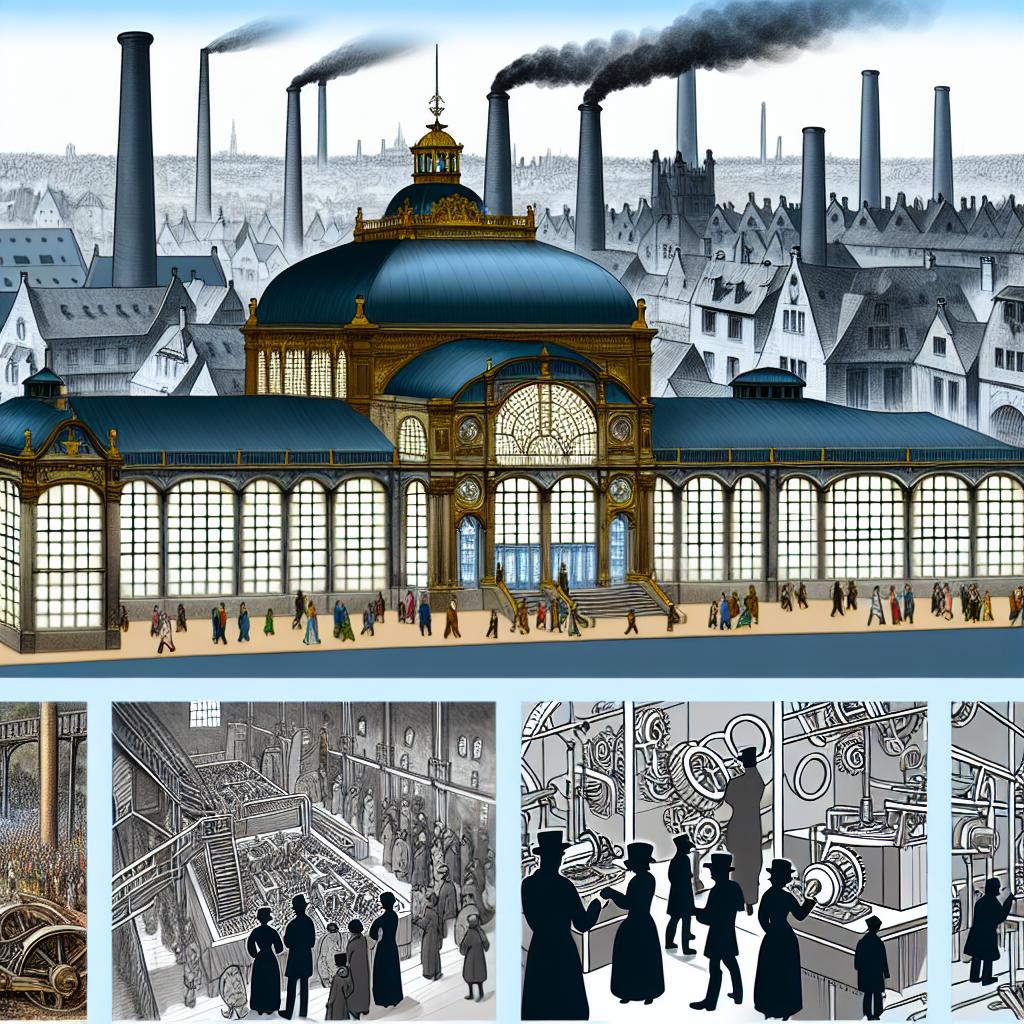The Industrial Revolution: A Catalyst for Museum Development
The Industrial Revolution, spanning from the late 18th to the early 19th century, represented a period of significant transformation across Europe and, subsequently, the world. This era marked a shift not only in industrial practices but also in societal, economic, and cultural landscapes. A key area of this transformation was the development of museums. The accelerating pace of industrialization and urbanization triggered profound socio-economic changes, with a ripple effect reaching the realms of education and culture, which, in turn, influenced the evolution of museums during this vibrant period.
Emergence of Public Museums
Initially, museums were private collections, often owned by aristocrats and only accessible to society’s upper echelons. Such collections were seen as personal treasures, reflecting the tastes and interests of their affluent owners. However, the Industrial Revolution brought about substantial changes, particularly within the class structure. The era saw the rise of a burgeoning middle class, empowered by newfound wealth from industrial enterprises and a burgeoning interest in education and cultural pursuits.
In response to this evolving societal trend, European nations began establishing public museums. These institutions were envisioned as spaces where art, history, and culture could be made accessible to a wider audience, breaking from the constraints of exclusivity that marked earlier collections. The opening of the Rijksmuseum in Amsterdam in 1885 serves as a telling example. Designed to provide public access to art and historical artifacts, the museum became a beacon for cultural inclusivity. Similarly, the reorganization of the British Museum during this period underscored a shift towards accommodating broader public interest, significantly expanding its collections to reflect this newfound accessibility.
Technological Advances and Museum Design
The Industrial era brought forth numerous technological innovations that dramatically influenced museum architecture and design. Building methods and materials evolved, with the advent of iron and glass playing transformative roles in architectural practices. These materials allowed for the construction of grand structures that were both aesthetically impressive and functional. The use of iron and glass enabled architects to design larger and more open spaces, permitting museums to house expansive collections and accommodate a greater number of visitors.
An illustrative example is the Victoria and Albert Museum in London. The design of this museum incorporated these technological advancements, resulting in an impressive yet inviting space to the public. Its construction reflected a broader trend of integrating modern materials without sacrificing accessibility, thus making cultural heritage more inclusive.
Collections and Exhibitions
The era of industrialization was also a time of increased global trade and exploration, which resulted in an influx of artifacts from various parts of the world into European museums. This period saw museums embarking on an ambitious expansion of their collections to include a diverse array of cultural and historical items, showcasing Europe’s expanding global influence and interests.
Museums of the time began curating specialized exhibitions to emphasize emerging technological advancements. A notable example is the Great Exhibition of 1851, which took place in the Crystal Palace. This event celebrated industrial innovations and achievements by drawing attention to the indispensable role of technological progress during the Industrial Revolution.
The Role of Museums in Education
As public education systems began to take shape during the Industrial Revolution, museums increasingly emerged as vital educational resources. These institutions became platforms where individuals, regardless of age or background, could expand their knowledge of art, science, history, and technology, supplementing learning beyond traditional educational settings.
Prominent museums, such as the Louvre and the Glyptotek, took proactive steps to launch educational programs. These initiatives aimed to provide visitors with greater insights into diverse cultures and significant historical events. By fostering an environment conducive to learning and personal growth, museums contributed to nurturing an informed and culturally aware populace.
Conclusion
The Industrial Revolution, with its profound transformations, played a pivotal role in redefining the landscape of museums. This era marked the transition of museums from exclusive repositories of private collections to centers for inclusive cultural and educational engagement. The technological advancements and cultural shifts of the time laid the foundation for the modern museum, making cultural heritage more accessible and democratized. This democratization of knowledge and culture now forms the bedrock for today’s thriving museum landscape across Europe, a legacy that continues to inspire curiosity and understanding among diverse audiences.

